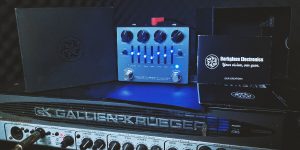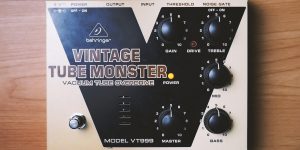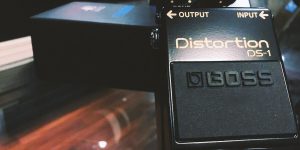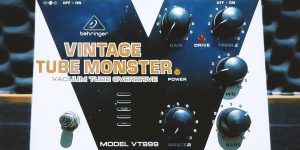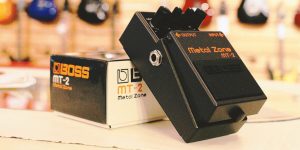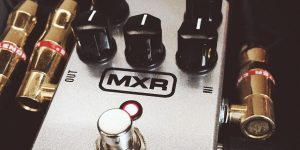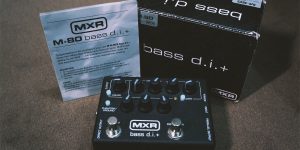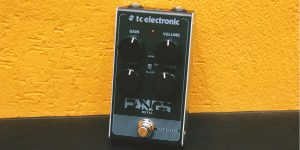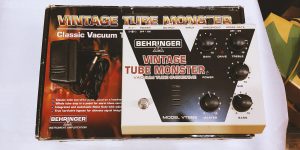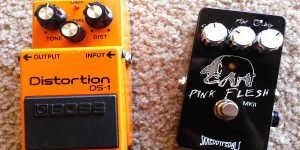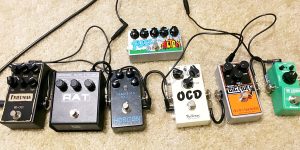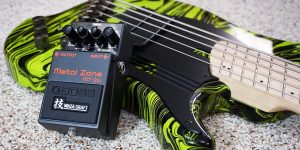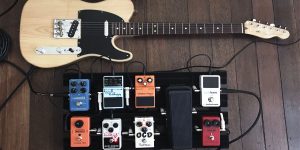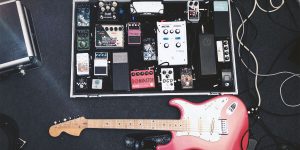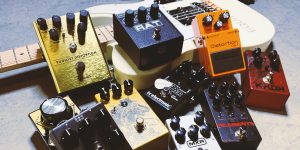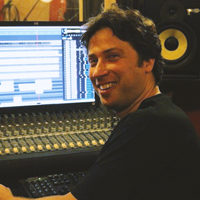In the world of guitar music, there’s a “unique magic item” that allows musicians to alter and enhance the sound of their instruments: these are guitar pedals. Have you ever wondered about the different types of guitar pedals and how they work?
If so, you’ve definitely come to the right place. From the early, simplistic fuzz boxes to the latest advanced digital processors, these compact devices have provided guitarists with the unique ability to transform and amplify their sound. They’ve been the key to broadening musical horizons and achieving previously unimaginable soundscapes. Let’s dive into them together!
Types of guitar pedals
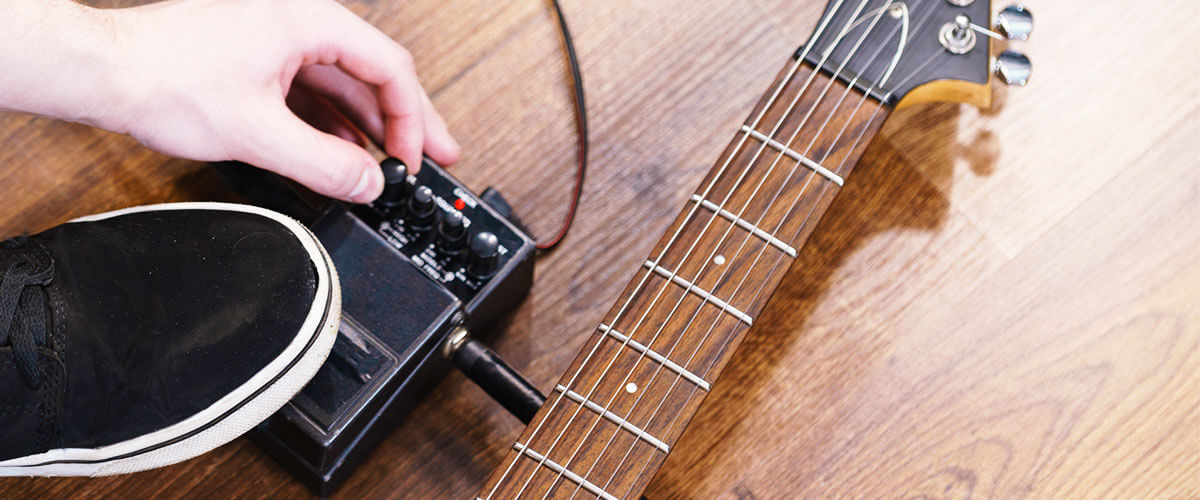
Diving into the world of music equipment, one might frequently come across the question: “What is a guitar pedal?” At its core, a guitar pedal is a compact electronic device that alters the sound signal from a guitar, producing various effects and tonalities. In this section, I will share with you the diverse range of these magical boxes, their unique features, and how each one can shape a guitarist’s signature sound. Also, I will uncover the different types of guitar pedal effects available to musicians. Let’s embark on this sonic journey together!
Dynamic pedals
These devices primarily manage the dynamics of volume or signal amplitude. Whether you’re looking to boost quiet parts, reduce loud spikes, or do both, dynamic pedals are the tool for the task. Let’s delve into some popular types:
Compressors
Compressors work to smooth out the dynamics of your sound. They boost the quieter parts and soften the louder ones, ensuring a consistent volume throughout your playing. This is especially useful for fingerstyle guitarists or bassists aiming for an even tone.
Limiters
Limiters act as a safety net by setting a maximum output level. Any signal that exceeds this level is reduced, preventing potential damage to gear or sudden volume spikes during performances.
Gates
Often called noise gates, they mute the signal when it drops below a set threshold. They’re perfect for eliminating unwanted background noise or humming when you’re not playing.
Time-based pedals
Time-based pedals play with the signal over durations, adding echoes, ambiance, or reflections to craft a sonic landscape that’s both rich and immersive. Here are some key types:
Delays
Delays capture the incoming signal and play it back after a set duration, creating a repeating, echo-like effect. The number of repeats and the time between them can be adjusted, allowing for everything from slap-back echoes to cascading soundscapes.
Reverb
Reverb pedals emulate the natural reflections of a sound in a physical space, whether it’s the lively echo in a large hall or the subtle ambiance in a small room. They add depth and space to your tone, making it sound bigger and more atmospheric.
Echo
While similar to delays, echo pedals focus on recreating the organic sound of an actual echo, like one you’d hear in a canyon or large open space. The repetitions are more pronounced and less refined than with standard delays, offering a rawer, natural repetition to your sound.
Modulation pedals
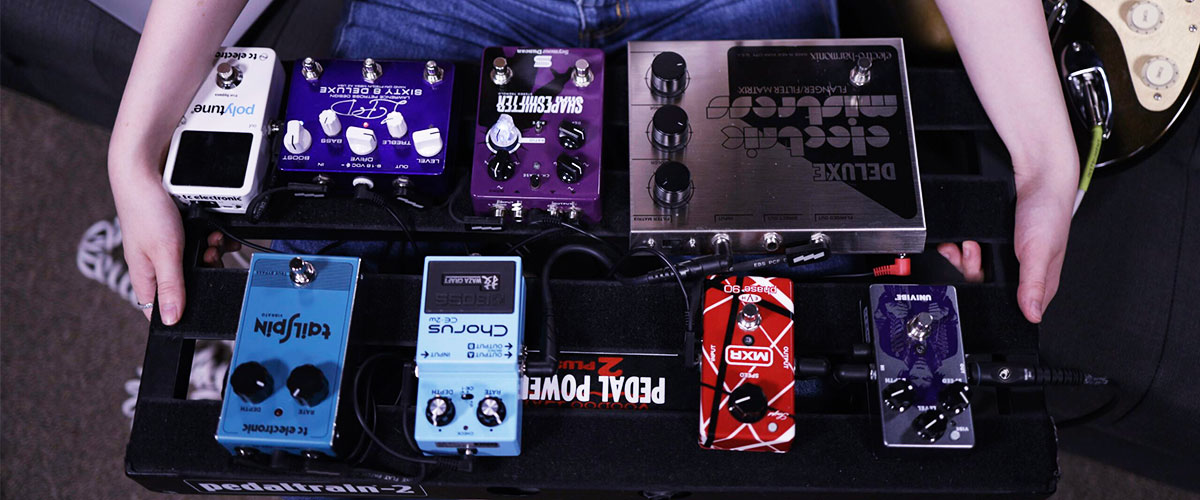
Modulation pedals alter the character of the signal by modulating or changing specific frequencies. Through this, they add depth, movement, and texture to the sound. Let’s take a closer look at some of the primary modulation pedal types:
Chorus
The chorus pedal thickens the sound by duplicating the input signal and slightly detuning the duplicated one. This creates a shimmering effect, almost as if multiple instruments are playing simultaneously.
Flanger
Flangers produce a sweeping, jet-like sound by mixing the guitar signal with a slightly delayed and modulated version of itself. The resulting effect is dynamic and moves cyclically.
Phaser
Phasers split the guitar signal and modify one path’s phase, then recombine them. This produces a sweeping, filter-like effect that creates peaks and troughs in the sound wave.
Tremolo
Tremolo pedals modulate the volume of the signal, creating a pulsating effect. It’s reminiscent of the vintage amp tremolos from the ’60s, making the sound rise and fall rhythmically.
Distortion pedals
Distortion pedals reshape the signal, clipping or distorting it and enriching it with added harmonics to achieve a harder, more aggressive sound. They have been fundamental to rock, metal, and many other music genres. Let’s explore these tone-shaping tools:
Overdrive
Overdrive pedals simulate the natural break-up of an amplifier pushed to its limits. They provide a warm and smooth distortion, perfect for bluesy tones or rock rhythms.
Fuzz
Fuzz pedals offer extreme saturation and sustain, creating a thick, buzzy, and fuzzy tone. This was the sound behind many iconic rock and psychedelic tracks of the ’60s and ’70s.
Distortion
Distortion pedals offer more gain than overdrives, and they heavily clip the signal, giving it a harder edge. Ideal for rock leads or metal rhythms.
Boost
Boost pedals amplify the guitar’s signal without necessarily adding distortion. They’re perfect for pushing an amp further into overdrive or elevating the volume for solos.
Pitch-shifting pedals
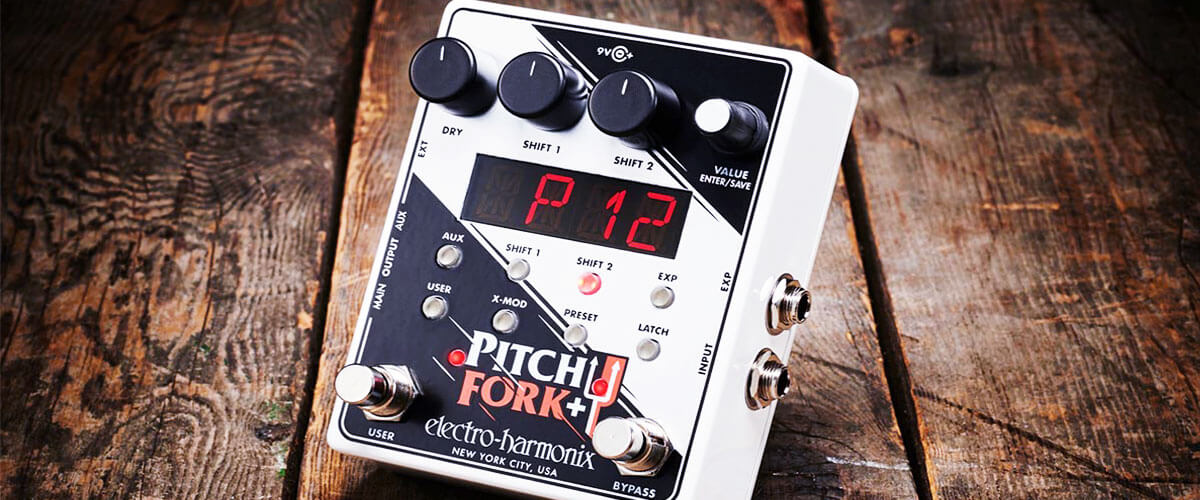
Pitch-shifting pedals modify the pitch or tonal height of the signal, enabling guitarists to experiment with harmonies, octave ranges, and pitch modulations without changing their playing technique. Here are some standout examples:
Octavers
Octavers add synthesized tones that are one or more octaves above or below the original note. This enriches the sound, often giving the impression of multiple instruments playing together.
Harmonizers
Harmonizers generate harmonies based on the input note, allowing players to produce intervals or chord structures automatically as they play single notes on the guitar.
Pitch shifters
These versatile pedals can shift the pitch of the signal up or down by set intervals. They offer a broader range than octavers and are popular in experimental music genres.
Filter pedals
Filter pedals adjust the frequency spectrum of the signal. By filtering out certain frequencies, they help achieve a better balance among instruments, shape the tone, or produce expressive sound effects. Here’s a closer look:
Wah-wah
Wah-wah pedals boost and sweep through a range of frequencies. Controlled by a foot rocker, they produce the iconic “wah” sound, a tone that shifts from bassy to trebly and back.
Envelope filters
Also known as auto-wahs, these pedals dynamically filter frequencies based on the strength of the input signal. Striking the strings harder or softer will result in varied filter sweeps, giving an automatic wah-like effect.
Equalizers
EQ pedals allow players to boost or cut specific frequency bands, granting them precise control over their tone. This makes it easier to fit the guitar sound into a mix or to emphasize particular tonal characteristics.
Looping pedals
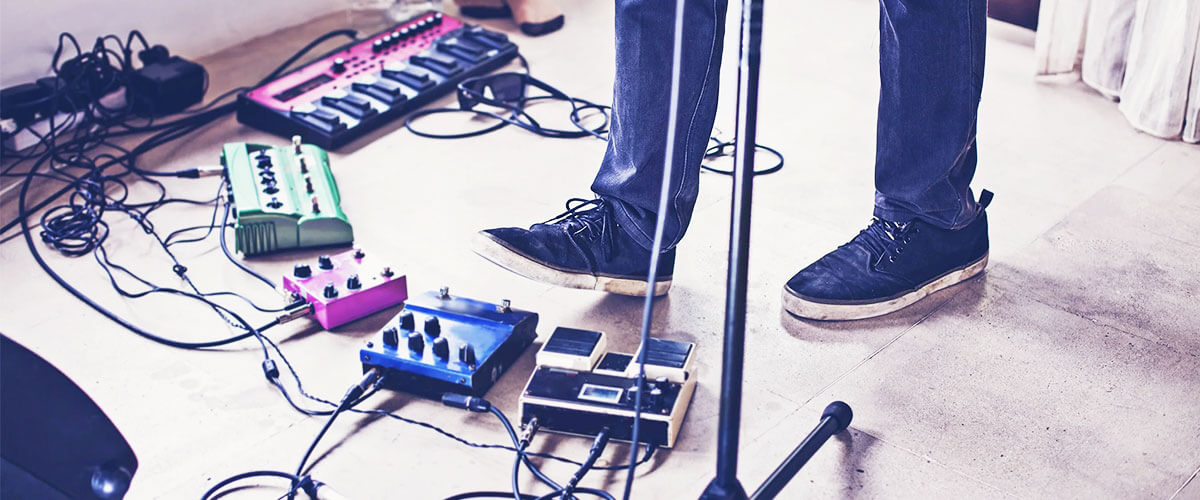
Looping pedals are transformative tools in the hands of creative musicians. Their primary function? To record a snippet of a player’s performance and then replay it, facilitating the layering of sounds. Here’s a deeper dive:
- Recording and playback: At its core, a looping pedal captures a segment of what you play and then continuously plays it back, creating a loop. This loop can be the foundation over which you overlay additional parts.
- Real-time song creation: Thanks to looping pedals, guitarists can craft a song in real time. By overlaying parts atop one another, intricate arrangements come to life, piece by piece. It’s like being a one-person band, building up from a simple rhythm to a full-blown orchestration.
- Practice tool: Beyond performance, looping pedals are invaluable for practice. Guitarists can record a chord progression and then practice lead parts over it, refining their skills with their self-made backing track.
- Special effects: Loopers aren’t just for layering. Creative minds use them for special effects, crafting unique soundscapes, or introducing unexpected elements into a performance.
In essence, looping pedals expand the realm of possibility for a guitarist, enabling them to transcend traditional boundaries and explore new sonic territories.
Multi-effects
Multi-effects pedals are the Swiss Army knives of the guitar world. They house a plethora of effects within a single unit, offering versatility and convenience to players. Here’s a breakdown:
- All-in-one solution: Instead of managing multiple individual pedals, players can access a wide range of effects with just one device. From delays and reverbs to distortions and modulations, the world is at your feet.
- Space and cost-efficiency: These pedals save not only space on a pedalboard but often money as well. Instead of investing in numerous standalone pedals, a guitarist can have a multitude of effects in one purchase.
- Preset configurations: Many multi-effects pedals come equipped with factory presets. These are pre-configured effect combinations that are optimized for various genres or specific sounds, allowing for plug-and-play simplicity.
- Customizability: Beyond presets, these units often allow users to craft their unique effects chains, tweaking parameters and saving their configurations for instant recall.
In a nutshell, multi-effects pedals provide the flexibility of a full pedalboard in a compact and user-friendly format, making them an excellent choice for both seasoned professionals and budding guitarists alike.
The most common pedals for electric guitars
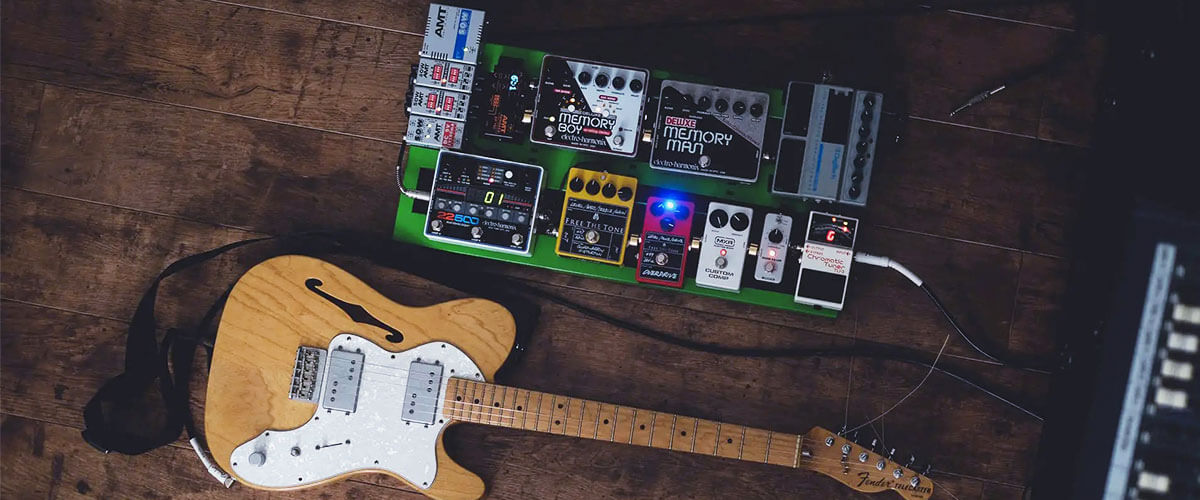
Electric guitars, with their vast sonic range and capacity to produce colorful tones ranging from pristine cleans to aggressive roars, can significantly benefit from various pedals. These devices enhance, modify, and diversify the sounds achievable by an electric guitar, leading to a more versatile and rich playing experience. The table below provides an overview of the most commonly used pedals and their primary purposes:
| Pedal type | Purpose & rationale |
| Distortion/Overdrive/Fuzz | These pedals clip the guitar signal to produce saturated tones, ranging from slight break-up (overdrive) to full-blown, thick fuzz. They’re foundational for rock, metal, and blues genres. |
| Equalizer | EQ pedals allow players to boost or cut specific frequency bands, providing precise tone shaping. This is essential for fitting the guitar sound in a band mix or emphasizing its characteristics. |
| Looper | As discussed earlier, loopers enable real-time layering of guitar parts, making them great for solo performance and practice. |
| Wah-wah | With its signature sweeping tone, the wah-wah pedal provides an expressive voice-like modulation, popular in funk, rock, and solos. |
| Pitch shifting | By altering the pitch of the signal, these pedals let players add harmonies, octaves, or other pitch-related modulations to the sound, leading to richer sonic textures. |
| Modulation | Chorus, phaser, and flanger are examples of modulation effects that enrich the sound by adding movement and depth. They’re ideal for creating spacious and atmospheric tones. |
| Delay/Reverb | These pedals introduce echoic reflections and space to the sound. While delay repeats the signal at set intervals, reverb gives a sense of a room or hall ambiance. |
| Multi-effects | As previously mentioned, these are all-encompassing units that combine the above effects, optimized for versatility and convenience. |
The most common pedals for acoustic guitars
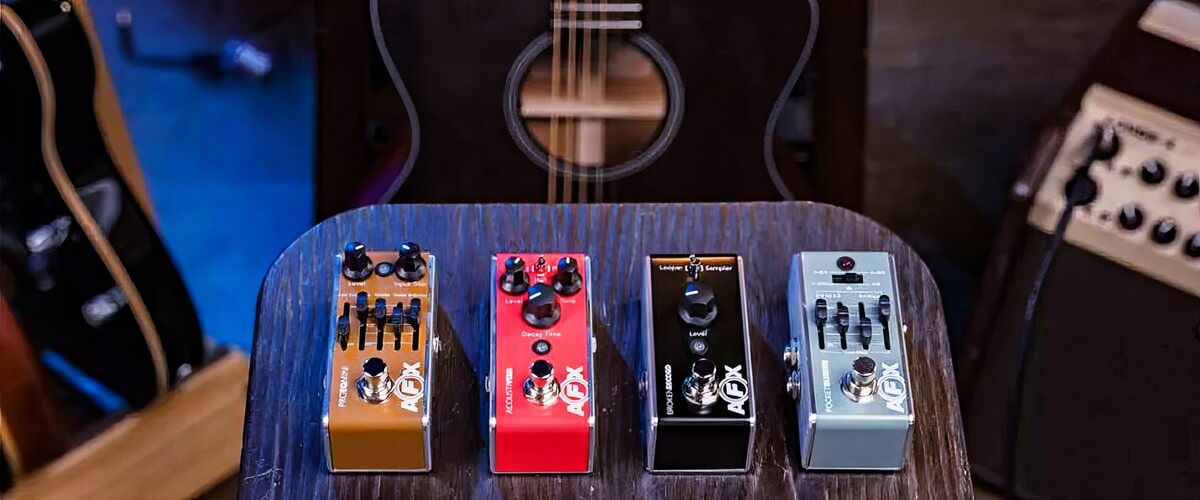
Acoustic guitars, celebrated for their rich, resonant sound, often require subtle effects that accentuate their natural tone rather than drastically alter it. While electric guitarists might seek out more noticeable and transformative effects, acoustic guitar players tend to lean towards pedals that gently refine and enhance their instrument’s inherent sound. Here’s a brief breakdown:
- Compressor: Acoustic guitars can benefit from compressors as they even out the dynamics, ensuring a consistent volume across strums and fingerpicked notes. This results in a smoother and more polished sound, which is especially beneficial for live performances.
- Equalizer: EQ pedals allow acoustic guitarists to tweak specific frequencies, helping to either emphasize the guitar’s natural tone or adjust it to sit well in a mix, especially when played alongside other instruments.
- Looper: Looping isn’t exclusive to electric guitars. Acoustic players often use loopers for creating layered compositions or for practicing intricate parts over chord progressions.
- Reverb/Delay: A touch of reverb or delay can add depth and space to the acoustic guitar sound, making it sound more expansive and ethereal. This is particularly useful when trying to convey a sense of ambiance or atmosphere.
- Chorus: While not always common, some acoustic guitarists use a chorus pedal to give their sound a shimmering, lush quality, adding a hint of richness and depth, especially for fingerstyle playing or ballads.
Conclusion

Understanding the diverse types of guitar pedals and their applications can significantly elevate a guitarist’s sound and creative potential. With a world of tones and textures at their fingertips, these tools enable musicians to sculpt their unique sonic signature. The endless combinations and capabilities offered by pedals provide musicians with a platform for genuine self-expression. So, when we talk about guitar pedals explained, we’re diving into the intricate process of turning a simple stringed instrument into a limitless canvas of auditory art. This exploration not only broadens a guitarist’s musical palette but also unveils the art and science behind each pedal’s function.
FAQ
What is the difference between analog and digital pedals?
Analog and digital pedals process the guitar signal differently. Analog pedals use analog electronic circuits, often utilizing components like resistors, capacitors, and transistors. They typically offer a warm and organic tone that many players love. Digital pedals, on the other hand, convert the guitar’s analog signal into a digital format, process it, and then convert it back to analog. They can provide more versatility and precision, often allowing for more complex and varied effects.
How do I power my guitar pedals?
Guitar pedals can be powered in a few ways:
- Battery: Some pedals come with a compartment for a 9V battery.
- Power adapter: Many pedals can be powered using a dedicated power adapter that plugs into a wall outlet.
- Daisy chain: If you have multiple pedals, you can use a daisy chain to power them from a single power source.
- Power supply units (PSUs): These are specialized devices that provide multiple isolated outputs for powering numerous pedals, ensuring clean and consistent power.
In what order should I arrange my pedals?
While there’s no strict rule, a common pedal chain order is: Tuner > Dynamic (Compressor) > Pitch-Shifting > Distortion/Overdrive > Modulation (Chorus, Phaser) > Time-based (Delay, Reverb). However, the order can be adjusted based on personal preference. Experimenting can lead to unique and creative sounds!
Can bass players use guitar pedals?
Yes, bass players can use guitar pedals. However, some guitar pedals might not handle the low frequencies of bass as effectively as pedals specifically designed for bass. That said, many bassists use guitar pedals for unique tones and effects.
What is ‘true bypass’ in guitar pedals?
‘True bypass’ means that when the pedal is off, the guitar’s signal goes directly from the input to the output jack, bypassing the pedal’s internal circuitry. This can prevent any potential coloration or loss of tone when the pedal is not engaged.
What’s the difference between a stompbox and a pedal?
The terms “stompbox” and “pedal” are often used interchangeably. Both refer to effects units that a guitarist can activate or deactivate with their foot. If one were to differentiate, a stompbox might be considered a subtype of pedals, usually compact and offering a single effect, whereas “pedal” is a broader term encompassing all foot-operated effects units. However, in common language, both terms essentially mean the same thing.


